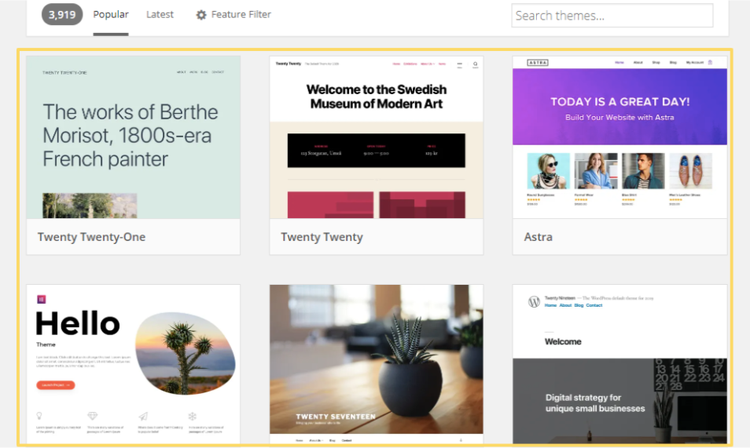What Is a Business Website?
A local business has a physical structure with walls, a roof, and an address. It’s a place where customers can step in, check out the products, and transact. In a virtual setting, this translates to a business website -- your business’ virtual home base.
What is a business website?
Essentially, a business website serves as an online space to provide your target audience or general readers information about your company. It can also be a platform for e-commerce and payment processing and a space to promote your products and services and display content, such as news and company events.
What is the purpose of a business website?
There are various types of sites, such as forums, personal blogs, and magazine sites. Each of these has its primary functions. A business website’s main purpose, however, is to “house” a business online.
It is meant to be the main virtual residence of a business since the company has full control over the platform. No other organization or entity competes for the web users’ attention while on the website since it’s all about a specific business.
Social media platforms and other third-party sites are different as the company is “bundled” together with other users. A good example is Facebook and the myriad business pages and account users that operate on the platform.
3 best practices for making a business website
While there’s no one-size-fits-all formula for designing a company website, below are some helpful tips.
1. Use a reliable website builder
To simplify the process of making a business website, use reliable website builder software.
A trusted content management system, such as Wix, provides a library of customizable templates and drag-and-drop editor tools to help you build your business website with ease.
The platform offers an intuitive interface for quick and effortless website creation. This allows you to easily add site elements, such as a navigation menu, logo, and media; modify the template font colors, styles, and sizes; and use other web design tools.

Use website builders to create your business website quickly and easily. Image source: Author
With a user-friendly website builder, you can design and get your business site up and running in a few hours, if not minutes, with minimal effort and time.
2. Put a premium on readability
If your website content is difficult to read, your website visitors will log out in seconds. This can hurt your conversion rates and customer satisfaction, as well as your business’ bottom line.
That’s why you need to be mindful of your content’s readability. If your site visitors won’t bother engaging because your content is hard to consume, you defeat the purpose of having a business website.
Below are tried-and-tested design tips to improve your content’s readability.
- Use contrasting colors. Select font colors that won’t blend with your website’s background colors. You want your visitors to read your content easily, not squint as they make out the text on your website, giving them a poor experience.
- Choose the right font. Use easy-to-read font styles that won’t obscure your text, ruin the user experience, or hinder the success of your content and website marketing efforts. Select a font that aligns with your brand image for consistency, making your brand catchier to your audience.
- Maintain font consistency. Avoid using too many font sizes. Stick to two or three, which makes your content look cleaner and easier to scan and digest. Use larger fonts to highlight headings and subheadings and use smaller font sizes for more in-depth and longer information.
3. Provide intuitive navigation
If your business website’s navigation isn’t logical, your users will struggle with finding specific content or pages within your site. This could influence them to click out and go to your competitors.
To ensure easy site navigation for your visitor, consider the tips below.
- Follow established web design standards. Don’t confuse visitors by using outside-the-box navigation designs that complicate the browsing experience. Stick to a sidebar, menu, and other navigational element placement that’s familiar and easy for your site users.
- Keep it simple. Keep the links in your navigation bar to a minimum so you don’t overwhelm your website visitors. WordPress has several website themes you can choose from that look professional and easily navigable.

Use themes with pre-designed headers and menus to help simplify your navigation design process. Image source: Author
Start building your business website
Creating a business website is one thing, but ensuring your website can convert web visitors into paying customers is another. Consider the tips we covered in this guide to increase your chances of getting meaningful results out of your business website.
Alert: our top-rated cash back card now has 0% intro APR until 2025
This credit card is not just good – it’s so exceptional that our experts use it personally. It features a lengthy 0% intro APR period, a cash back rate of up to 5%, and all somehow for no annual fee! Click here to read our full review for free and apply in just 2 minutes.
Our Research Expert
We're firm believers in the Golden Rule, which is why editorial opinions are ours alone and have not been previously reviewed, approved, or endorsed by included advertisers. The Ascent does not cover all offers on the market. Editorial content from The Ascent is separate from The Motley Fool editorial content and is created by a different analyst team.
Related Articles
View All Articles